|
Displaying items by tag: financial
A federal judge approved Detroit's bankruptcy plan today, allowing the city government to hit the reset button after its years of financial mismanagement. As part of the deal, which took a relatively speedy 16 months to complete, the city is eliminating $7 billion worth of debt—some creditors will be paid just 14 cents on the dollar—while slicing pension payments to its retired workforce by 4.5 percent (and ending their cost of living increases, and upping their health plan costs, and ... you get the idea, it's unpleasant). Meanwhile, the blueprint sets aside $1.7 billion over the next decade to cover critical needs, like demolishing abandoned homes and buying new fire trucks and ambulances.
As many outlets are noting, the bankruptcy could have been far lengthier, and even more painful for retirees, had it not been for an unusual deal designed to save the Detroit Institute of Arts while minimizing cuts to pensions.
A total of 23 libraries and museums across the UK will be able to add to their core collections with a £5m grant from the Heritage Lottery Fund (HLF).
The financial boost will enable the institutions to "go shopping" for new artifacts over a five-year period.
Among the projects to benefit from the cash is one to develop a collection on Polar explorer Sir Ernest Shackleton.
A widely watched lawsuit between a billionaire and top art tycoon has expanded to include one of the most private and powerful families in the art world.
Last week, a judge granted a motion by billionaire financier Ronald O. Perelman to depose members of the Mugrabi family as part of a lawsuit between Perelman and art megadealer Larry Gagosian. According to people familiar with the case, the depositions are scheduled for September and could delve into the financial relationships and dealings between the Mugrabis and Gagosian.
On December 18, the Philadelphia Museum of Art announced that it had successfully completed a five-year, $54 million campaign to endow 29 staff positions across the institution’s full range of operational departments. The campaign began in 2008 after the museum received a $27 million grant from H.F. “Gerry” Lenfest, then chairman of the institution’s board of trustees, and his wife, Marguerite. The campaign challenged donors to match the grant, million for million, in exchange for the right to endow and name the positions.
The Lenfests, who have donated over $100 million to the Philadelphia Museum of Art to date, are the institution’s largest financial donors. Their challenge was met by 27 donors, 19 of whom are making their first gift of such magnitude.
The Philadelphia Museum of Art’s endowment now totals $408 million.
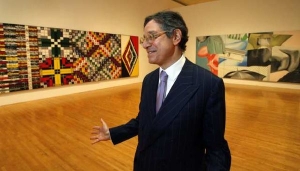
After three years at the helm of the Los Angeles Museum of Contemporary Art (MOCA), former New York art dealer, Jeffrey Deitch, is expected to resign as director. Deitch announced his intention to leave the institution to MOCA's trustees and board. He is currently in the middle of a five-year contract with the museum.
Prior to joining MOCA in 2010, Deitch ran the Deitch Project, a massively successful and pioneering contemporary art gallery in Manhattan. He also served on the authentication committee of the estate of Jean-Michel Basquiat, one of Deitch’s close friends.
Deitch’s tenure at MOCA has been plagued by criticism. After firing longtime chief curator Paul Schimmel in 2012, John Baldessari, Ed Ruscha, Catherine Opie and Barbara Kruger resigned from the museum’s board, leaving it void of artist representation. While MOCA was in poor financial standing when Deitch came on board, the museum continued to fall into financial despair during his time as director. The museum is just starting to regain its footing after fundraising efforts by board members garnered over $75 million in donations.
A meeting is schedule for MOCA’s board on Wednesday, July 24, 2013. A search committee is expected to form shortly after.
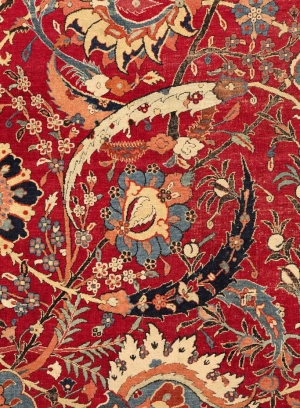
On June 5, 2013 at Sotheby’s New York the Corcoran Gallery of Art auctioned 25 rugs from its William A. Clark Collection. The rugs, which are from the 16th and 17th centuries, brought in $43.7 million, over four times the pre-sale high estimate of $9.6 million, making it the most successful carpet auction ever held. 100% of the lots sold and the auction achieved “White Glove” status, meaning every lot in the sale garnered more than it’s pre-sale high estimate.
The highlight of the auction was the Clark Sickle-Leaf Carpet. An important and iconic rug created by an unknown Persian artist during the first half of the 17th century, the rarely exhibited piece was expected to garner between $5 million and $7 million. The carpet ended up selling for $33.7 million, the highest price paid for any carpet at auction. Mary Jo Otsea, the senior consultant for rugs and carpets at Sotheby’s said, “Selling the Clark Sickle-Leaf Carpet for a record-breaking price of more than three times the previous auction record for a carpet has unquestionably been the highlight of my 30 year career. It is gratifying to see the strength of the market for carpets of this quality and rarity.”
The rugs were part of a bequest from William Clark (1839-1925), a Montana-based entrepreneur-turned-senator, to the Corcoran in 1925. The gift was comprised of 200 paintings and drawings and a number of other works, including the rugs. The Corcoran will use the proceeds from the sale to support future acquisitions that will better fit the institution’s focus on American and contemporary art. While the Corcoran has endured recent financial troubles, the money will not be used for operating expenses in keeping with its deaccession policy.
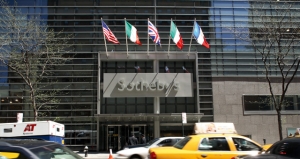
Sotheby’s announced its financial results for the first quarter of 2013, which ended March 31. The auction house’s first quarter total revenues were $101.7 million, a $3.2 million decrease from 2012. The decline was mainly caused by a reduction in auction commission margin from 18.1% to 15%. However, the quarter’s net auction sales increased 23% compared to last year’s first quarter.
High-grossing categories, including Impressionism as well a Modern and Contemporary Art, remained highly competitive. In an effort to enhance revenue and strengthen auction commission margins, Sotheby’s changed its buyer’s premiums structure rate on March 15, 2013. Buyers now pay 25% on the first $100,000 of a work’s selling price; 20% on the portion of the price above $100,000 but under $2 million; and 12% on any remaining amount about $2 million. Since most sales for the first quarter of 2013 took place before this shift occurred, it did not have a substantial impact on Sotheby’s results for the first quarter of 2013.
Due to the nature of the auction seasons, first and third quarters tend to bring in lower revenues than the second and fourth quarters. Typically, first quarter results are not an accurate gauge of expected full year results. Sotheby’s Chairman, President and CEO Bill Ruprecht said, “The first quarter showed a solid increase in auction sales compared to the prior year, but the results illustrate how competitive the market is for the highest value consignments. That competition resulted in lower commission margins, which is reflected on the bottom line.”
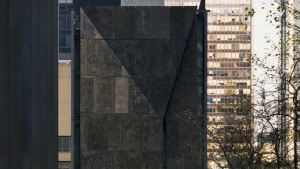
After news spread that New York’s Museum of Modern Art planned to tear down the former home of the American Folk Art Museum on West 53rd Street in Manhattan, opponents launched a petition asking MoMA officials to reconsider the decision.
The petition was launched by New Haven, CT resident, Robert Bundy, and has accrued over 2,000 signatures. In a letter written to MoMA’s director, Glenn D. Lowry, and the museum’s chief architecture curator, Barry Bergdoll, Bundy asks that MoMA preserve the building rather than raze it, which he claims would be an architectural loss for the city of New York.
The building in debate was designed by notable New York-based architects Tod Williams and Billie Tsien to house the Folk Art Museum. The project was completed in 2001 but after falling into financial turmoil, the Folk Art Museum decided to sell the building to MoMA and move to a smaller location.
The decision to level the structure, which features a sculptural bronze façade, is part of MoMA’s overarching expansion plans. Officials claim that the former Folk Art Museum building doesn’t mesh well with MoMA’s neighboring sleek, glass façade. The Folk Art building is also set back slightly from MoMA making expansion logistics more complicated.
In Bundy’s letter he writes, “We ask that the Museum of Modern Art reconsider its position and save the former American Folk Art Museum. The destruction of the building will result in MoMA no longer being regarded as a protector and promoter of the arts.” The petition can be found on change.org’s website.
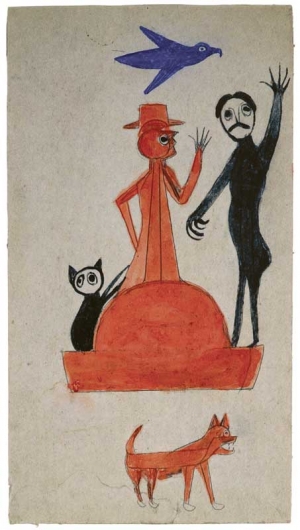
Two years ago, the Folk Art Museum in New York City was on the brink of closure due to its poor financial standing. Most of the museum’s troubles stemmed from a $32 million construction project that placed a flagship building next door to the Museum of Modern Art on West 53rd Street in Manhattan. After the project drew to a close in 2001, the Folk Art Museum struggled to pay off their debt to the Trust for Cultural Resources and in 2009 the institution defaulted on its payments. Desperate, the Folk Art Museum sold their flagship building and moved into a smaller space and drastically reduced its budget.
Now, after some major sacrifices, it appears that the Folk Art Museum has regained its footing. Attendance is expected to reach 80,000 this fiscal year, which ends June 30, 2013; last year the Folk Art Museum welcomed 66,000 patrons. A number of major donors are back on board with the museum including the Blanchette Hooker Rockefeller Fund, which recently gifted $25,000 to the institution. The Folk Art Museum will also participate in this summer’s highly anticipated Venice Biennale by sending an artwork from its collection to the show.
The Folk Art Museum has been strengthening its relationships with other institutions through collaborative exhibitions. The museum is currently hosting an exhibition of William Matthew Prior (1806-1873) oil paintings titled Artist and Visionary: William Matthew Prior Revealed (on view through May 26, 2013), which was organized by the Fenimore Art Museum is Cooperstown, NY. The exhibition Bill Traylor: Drawings from the Collections of the High Museum of Art and the Montgomery Museum of Fine Arts, which features a range of works by the self-taught artist, Bill Traylor (1854-1949), will open on June 11 and run through September 22, 2013.

The Los Angeles Museum of Contemporary Art (MOCA) is ramping up endowment efforts after a wave of financial and administrative troubles left the institution’s future murky. Museum officials announced on Tuesday, March 26, 2013 that the amount of promised donations would raise MOCA’s endowment to $60 million, the highest in the institution’s 34-year history.
Jeffrey Soros, the president of MOCA’s board, and trustee Eugenio Lopez, a prominent art collector, are helming the new fundraising campaign known as MOCA Independence. The goal of the campaign is to raise $100 million, which will allow the museum to continue operating as an independent institution devoted to contemporary art.
MOCA’s troubles began in 2008 when overspending and dwindling investments left the museum with an endowment of a few million dollars. Eli Broad, a billionaire art collector and one of MOCA’s founding board members, gave the museum a second chance when he donated $15 million to the institution; Broad also pledged $15 million to match outsider contributions. While Broad’s generosity helped keep the museum afloat, MOCA struggled to find donors that would match his pledge.
MOCA’s troubles prompted partnership offers from the Los Angeles County Museum of Art and the National Gallery of Art in Washington, D.C. The museum declined both offers in favor of maintaining its independence.
|
|
|
|
|